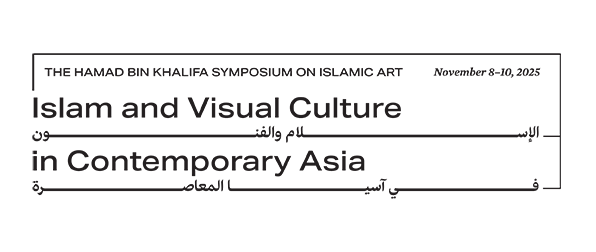The Seas and the Mobility of Islamic Art
8th Biennial Hamad bin Khalifa Symposium on Islamic Art
November 10-11, 2019
-in the sailing of the ships through the ocean for the profit of mankind – Surah 2:164
From medieval trade routes to the contemporary migrant crisis, the seas have served as both connective tissues and barriers between intellectual, political, and artistic traditions. Nowhere, perhaps, is this dual role more evident than within the visual cultures of the Islamic world. Stretching from centers around the Mediterranean and Indian Ocean, to the coasts of Africa, South and Southeast Asia, and with tendrils extending across the Pacific and Atlantic, these ethnically, linguistically, and socially variegated traditions were both united and divided by the seas and those who crossed them.
Inspired by Qatar’s distinctive location as part of international trade routes linking the Central Islamic lands, the Mediterranean, and the Indian Ocean, the eighth biennial Hamad bin Khalifa Symposium on Islamic Art, which was held in Doha on November 10-11, 2019, fostered a lively, engaged, and critical discussion touching upon some of the most vital questions raised by these vibrant and rich interchanges of the arts. How did exposure to imported materials and ideas transform formerly local artistic traditions? What role did travel, diplomacy, and gift-giving play in crafting seemingly discrete forms and practices? How are the movements of people, shifting markets for labor, and the uneven distribution skills and techniques, bound up with the formation and metamorphosis of styles? How did the shipment of commodities and curiosities from distant places shape and change social, cultural, and religious institutions? What role do the objects created from such interactions have in enhancing cultural understanding or generating enmity and mistrust? And how has the ever-increasing pace of globalization effected such developments?
Panels explored these themes, with an eye to interconnectivity across geographic boundaries both within the world of Islam and beyond, embracing the full span of their visual and material cultures.
Conference Co-chairs
Radha Dalal, Assistant Director of Art History and Assistant Professor of Islamic Art, VCUarts Qatar
Sean Roberts, Interim Director of Art History and Associate Professor of Pre-Modern Mediterranean Art, VCUarts Qatar
Jochen Sokoly, Associate Professor of Islamic Art, VCUarts Qatar
The 8th Biennial Hamad bin Khalifa Symposium on Islamic Art took place in the Atrium at VCUarts Qatar, located at Education City in Doha, Qatar, on November 10 and 11, 2019. At this international school for art and design, budding fashion designers, art historians, painters, graphic designers, printmakers and interior designers are discovering and honing their talents, as they experience a VCUarts education 7,000 miles away. VCUarts Qatar also collaborates with VCUarts in Richmond, through semester exchange programs for rising juniors and seniors. Over 300 students are enrolled at this sister campus, which focuses on the liberal arts and sciences with degrees in the arts and design.
VCUarts Qatar has been involved in the development of Qatar’s emerging design industry since it opened, helping to further the creative economy in this Middle Eastern country. VCUarts Qatar regularly hosts Tasmeem Doha, the biennial international art and design conference, attracting speakers and artists from across the world.
VCUarts Qatar was the first American university at Qatar Foundation’s Education City. The university is now neighbors with the Qatar campuses of Cornell, Carnegie Mellon, Georgetown, Northwestern, Texas A&M, HEC Paris and University College London.
8th Biennial Hamad bin Khalifa Symposium on Islamic Art
November 10-11, 2019


